Techniques de base
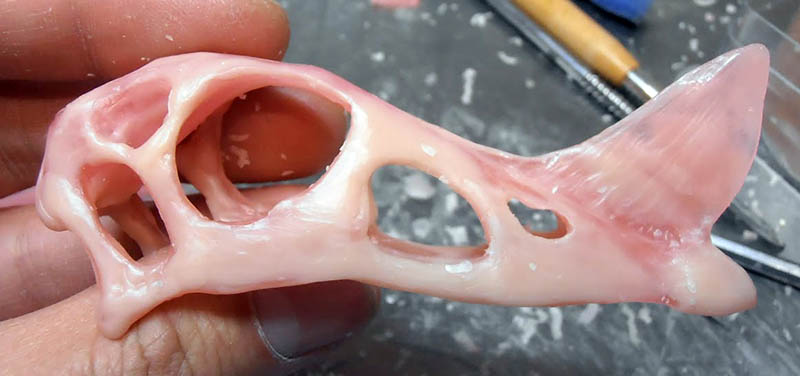
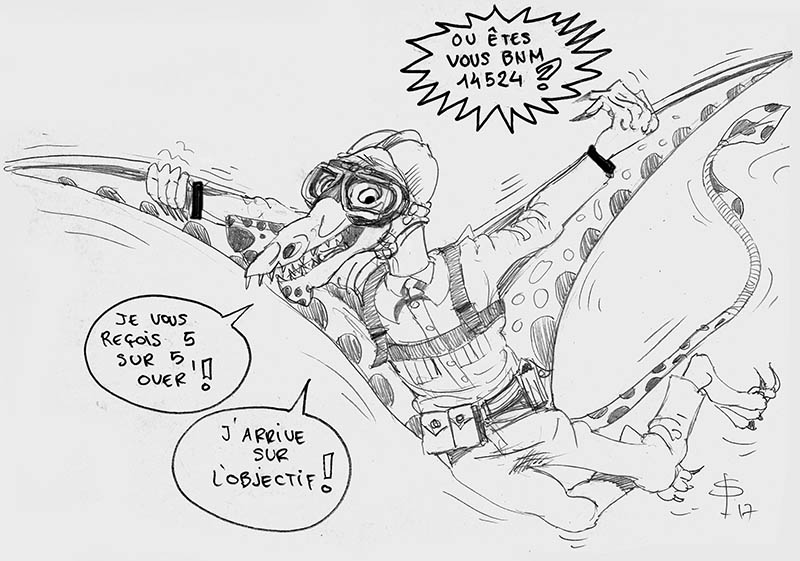
I've got you loud and clear, over ! I'm coming to the lens !
Raeticodactylus filisurensis Stecher 2008, Reptilia - Pterosauria - Campylognathoididae.
Il a vécu entre - 212.0 MA et -201.6 MA.
C'était un petit ptérosaure de la période du Trias (entre 252 et 200 millions d'années BP). Il fut découvert en Suisse dans le canton des Grisons à Fil da Stidier (proche de Tinzenhorn).
PTÉROSAURIENS : (Ordre des) Reptiles volants du Mésozoïque apparus au
Jurassique inférieur et disparus à la fin du Crétacé...
La surface portante était constituée d'une membrane tendue uniquement par les phalanges du quatrième doigt, placées au bord d'attaque de l'aile. Les Ptérosauriens étaient les seuls reptiles réellement adaptés à la vie aérienne, ils différaient totalement par leur apparence extérieure de tous les autres Archosauriens.
Son régime alimentaire était essentiellement piscivore...
Raeticodactylus filisurensis Stecher 2008, Reptilia - Pterosauria - Campylognathoididae.
It lived between 212.0 MA and 201.6 MA.
It was a small pterosaur from the Triassic period (between 252 and 200 million years BP). It was discovered in Switzerland in the canton of Grisons at Fil da
Stidier (near Tinzenhorn).
PTEROSAURIANS: (Order of) Flying reptiles of the Mesozoic era that appeared in the Lower Jurassic and disappeared at the end of the Jurassic.
Jurassic and disappeared at the end of the Cretaceous...
The supporting surface consisted of a membrane stretched only by the phalanges of the fourth finger, placed at the leading edge of the wing. Pterosaurs were the only reptiles truly adapted to life in the air, and their external appearance was totally different from that of all other Archosaurians.
Its diet was essentially piscivorous...
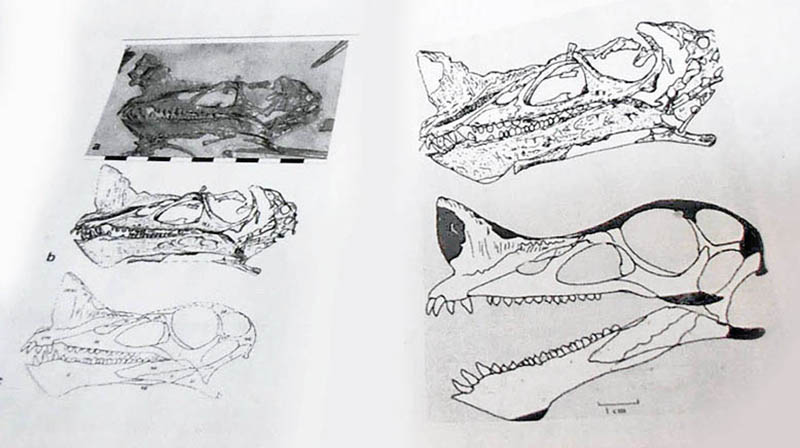
Pour réaliser cette sculpture il est tout d’abord nécessaire d’effectuer une recherche bibliographique au sein de la documentation paléontologique disponible via Internet et les ouvrages consultables dans les bibliothèques spécialisées (muséum, facultés, etc.)...
En particulier, il faut trouver et imprimer à taille réelle les représentations que l’on trouve (fossiles de squelette, squelettes reconstitués, etc.) ; cela
facilitera grandement la reproduction en 3D...
To create this sculpture, it is first necessary to carry outa bibliographical search of the palaeontological documentation
documentation available on the Internet and in specialist libraries in specialist libraries (museums, faculties, etc.)...
In particular, you will need to find and print out at actual size the representations(skeletal fossils, reconstructed skeletons, etc.); this will greatly facilitate
make 3D reproduction much easier...
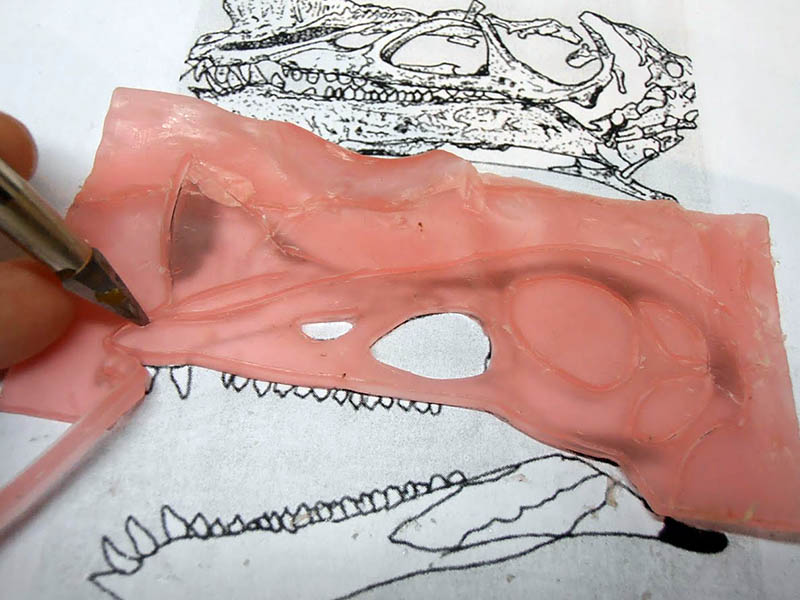
A l'aide d'une feuille de cire de modelage, je découpe les contours sur l'impression à taille réelle...
Using a sheet of modelling wax, I cut out the contours on the life-size print...
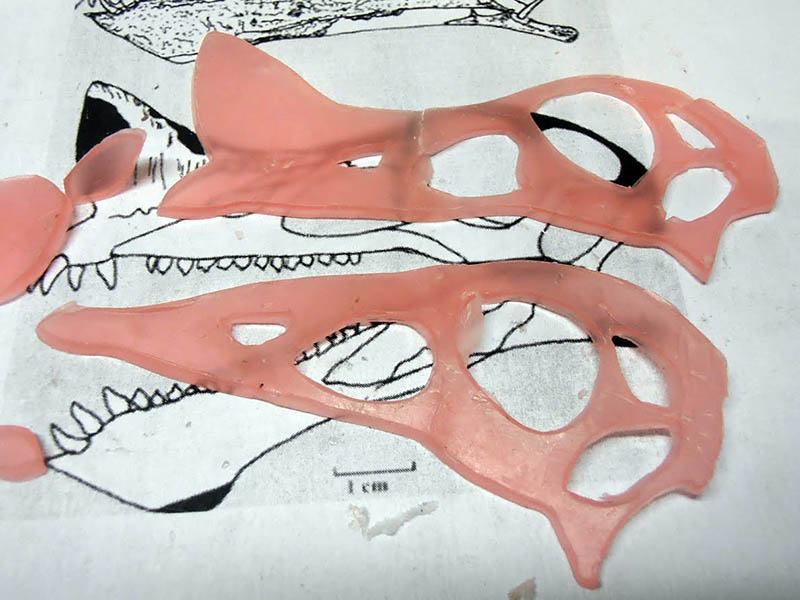 Je découpe ensuite une deuxième feuille de cire. Cette deuxième bande de cire (nota épaisseur 1,5 mm environ) sera coupée sans la crête par
Je découpe ensuite une deuxième feuille de cire. Cette deuxième bande de cire (nota épaisseur 1,5 mm environ) sera coupée sans la crête par
contre, qui est plus fine...
I then cut a second sheet of wax. This second strip of wax (note thickness about 1.5 mm) will be cut without the ridge though, which is thinner...
which is thinner...
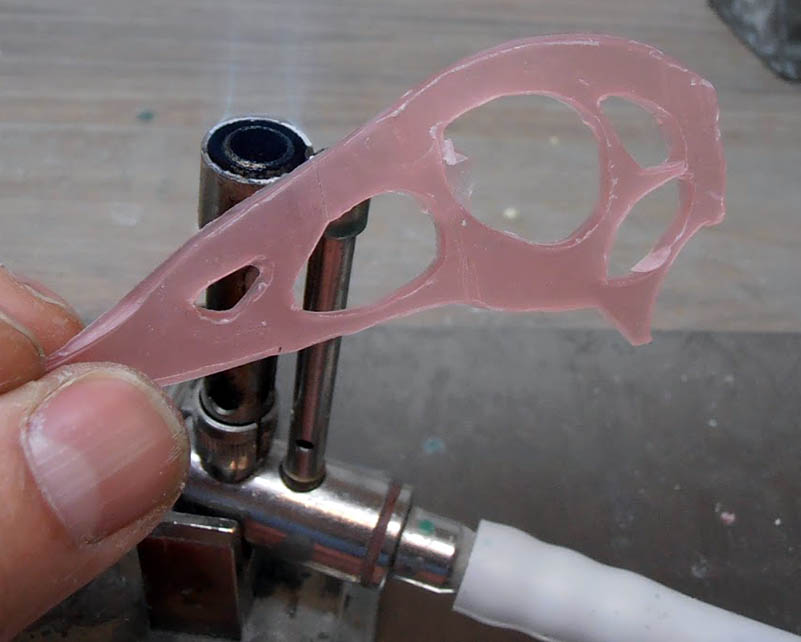 Je chauffe la cire en passant rapidement au-dessus d'une flamme afin de pouvoir la travailler et la coller à l'autre face, en lui ajoutant entre les deux un petit bout de cire pour donner du volume...
Je chauffe la cire en passant rapidement au-dessus d'une flamme afin de pouvoir la travailler et la coller à l'autre face, en lui ajoutant entre les deux un petit bout de cire pour donner du volume...
I heat the wax by passing it quickly over a flame so that I can work it and stick it to the other side, adding a small piece of wax in between to give it volume...
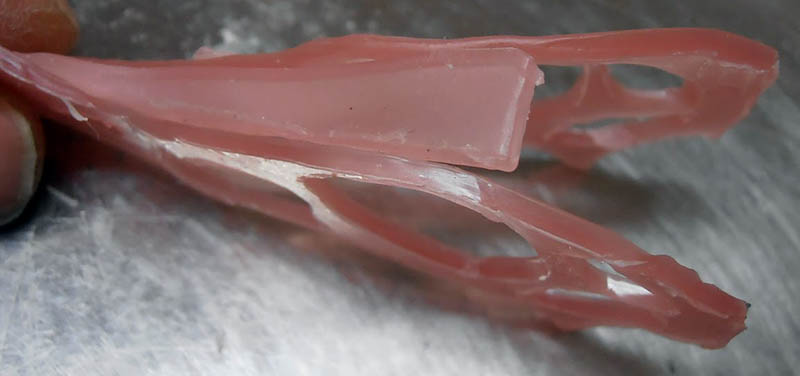 Pour le plus gros du modelage, l'utilisation du couteau à cire suffira...
Pour le plus gros du modelage, l'utilisation du couteau à cire suffira...
For the bulk of the modelling, using the wax knife will suffice...
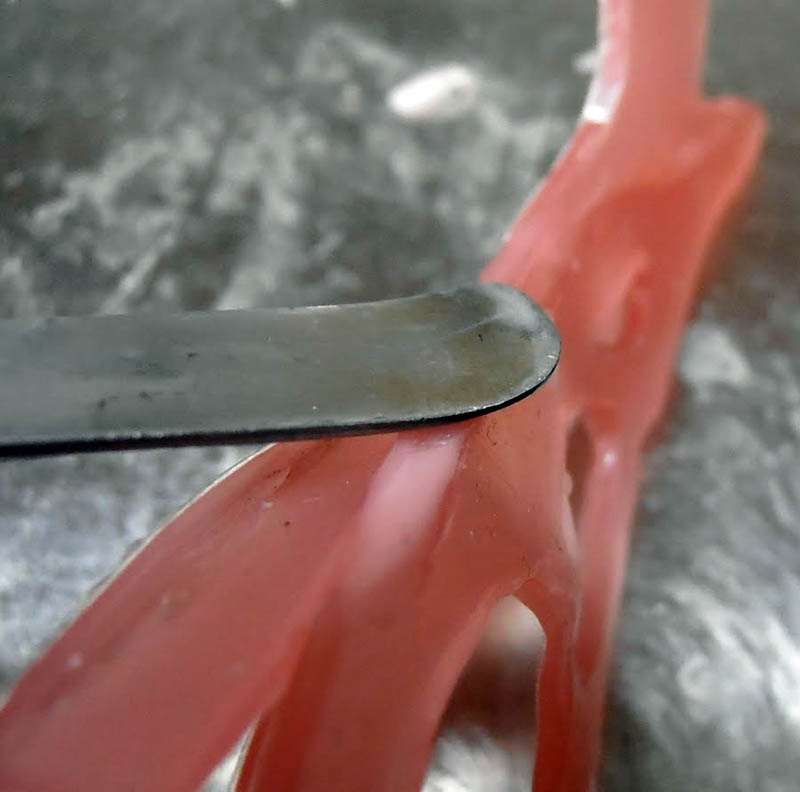 A l'aide du dos du couteau à cire, je fais les soudures, je rajoute, je soude, je trempe les couteaux sur le bloc de cire pour apporter de la cire
A l'aide du dos du couteau à cire, je fais les soudures, je rajoute, je soude, je trempe les couteaux sur le bloc de cire pour apporter de la cire
et je bouche les trous. Je lisse en passant encore le couteau...
Using the back of the wax knife, I make the solder joints, add, solder, dip the knives into the block of wax to add wax
and fill in the holes. I smooth it out by passing the knife over it again...
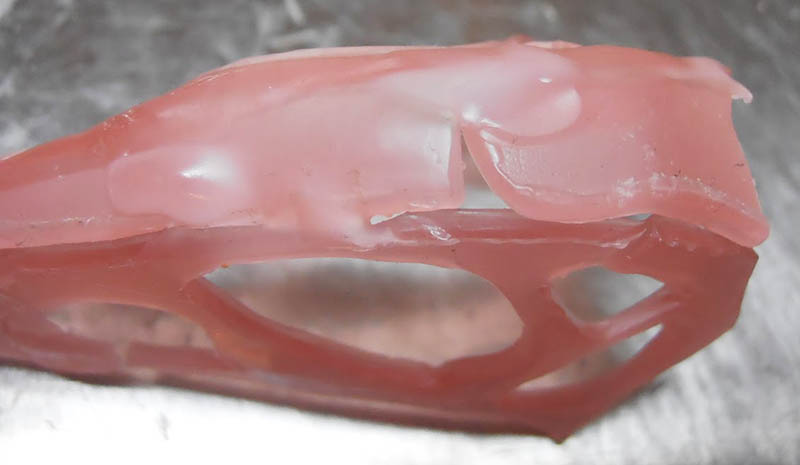 Ne pas hésiter à souffler en même temps pour refroidir la cire...
Ne pas hésiter à souffler en même temps pour refroidir la cire...
Don't hesitate to blow at the same time to cool the wax...
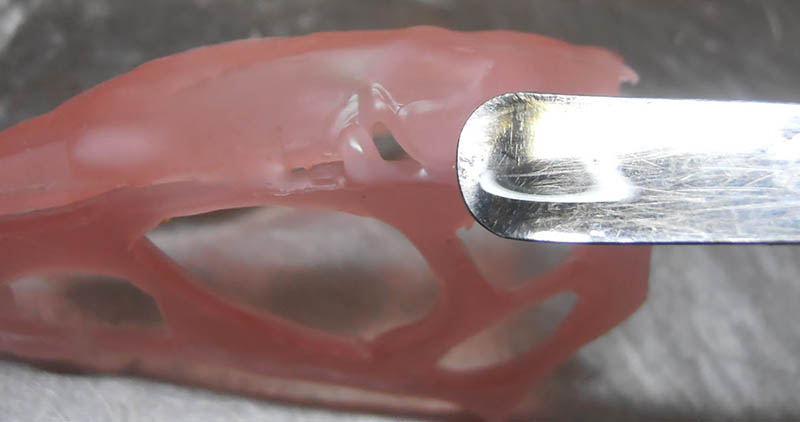
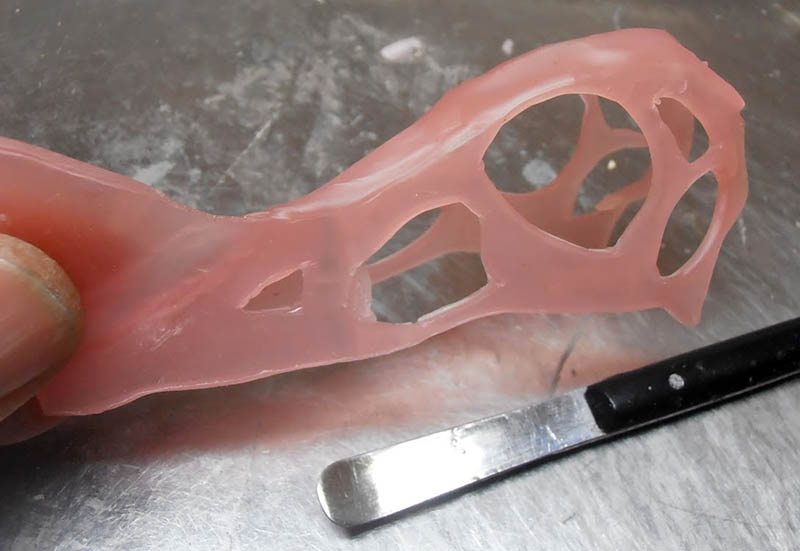 Faire la même chose pour la mâchoire...
Faire la même chose pour la mâchoire...
Do the same for the jaw...
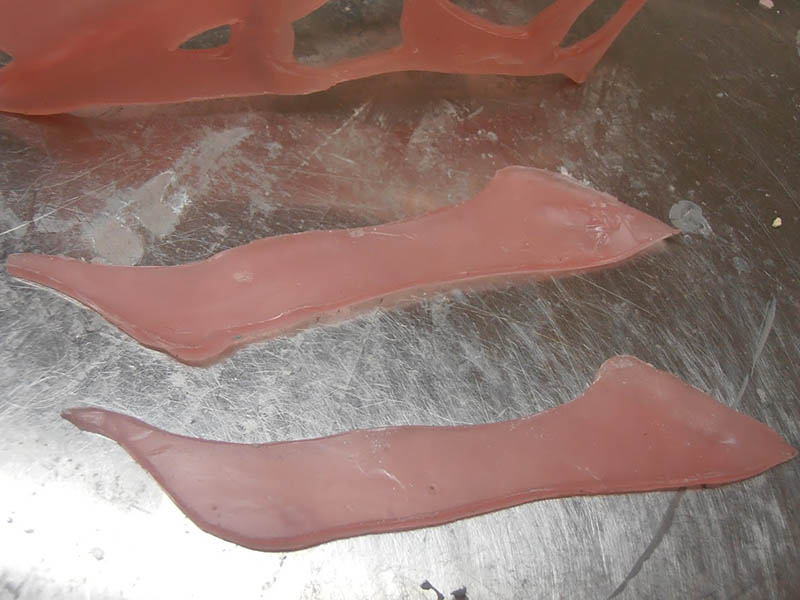
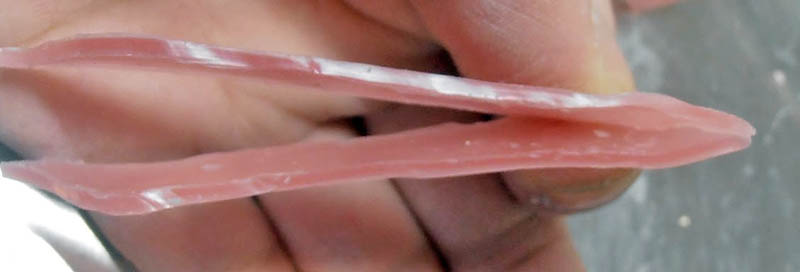
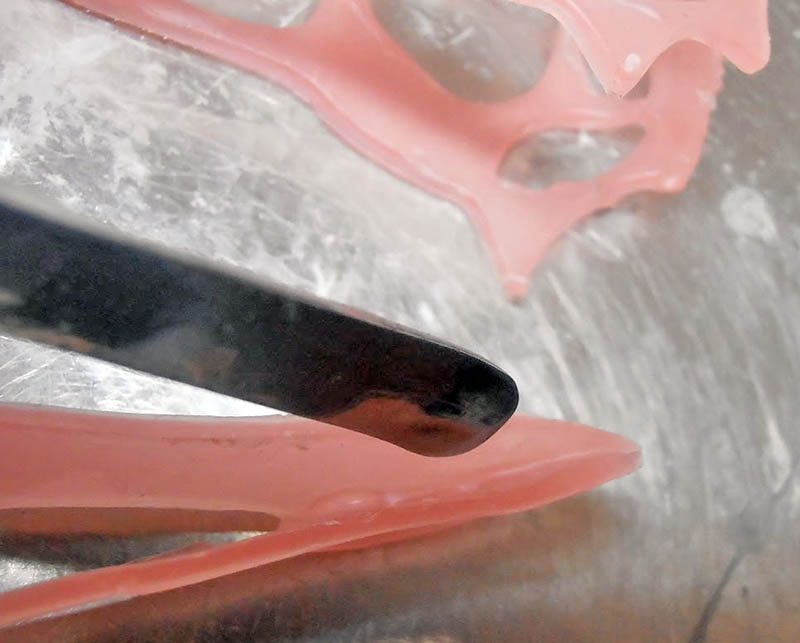
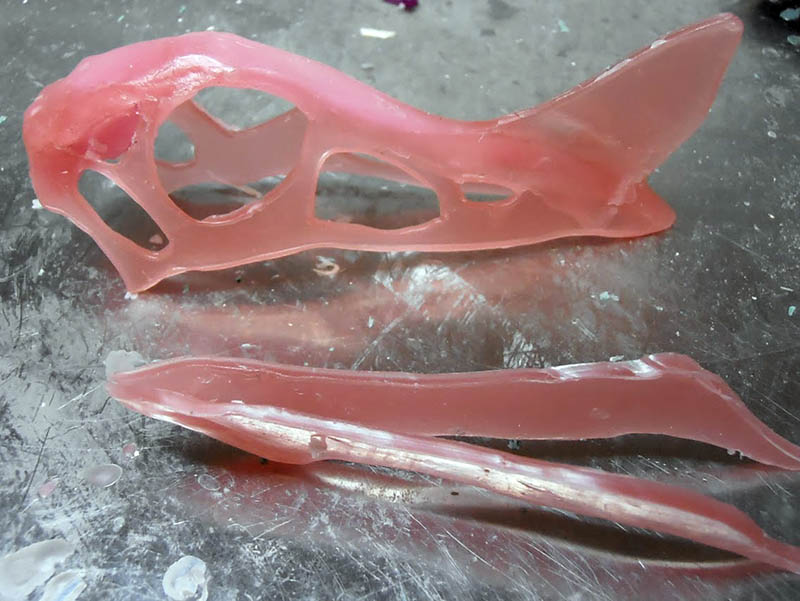
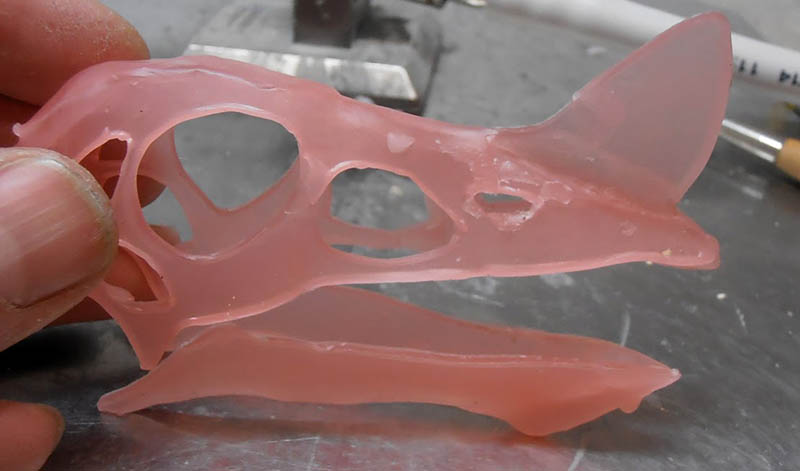
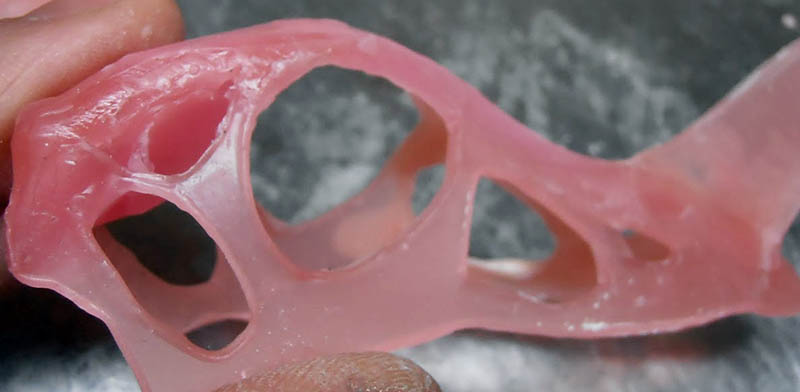 Je commence à donner plus de volume au crâne en chauffant un bout de cire pour pouvoir le modeler à la main comme de la pâte à modeler. Je l’insère, je fais la soudure toujours avec le couteau à cire. Bien penser à faire les soudures internes de la même façon et lisser...
Je commence à donner plus de volume au crâne en chauffant un bout de cire pour pouvoir le modeler à la main comme de la pâte à modeler. Je l’insère, je fais la soudure toujours avec le couteau à cire. Bien penser à faire les soudures internes de la même façon et lisser...
I start to give the skull more volume by heating a piece of wax so that I can shape it by hand like modelling clay. I insert it and weld it using the wax knife. Remember to do the internal welds in the same way and smooth them out...
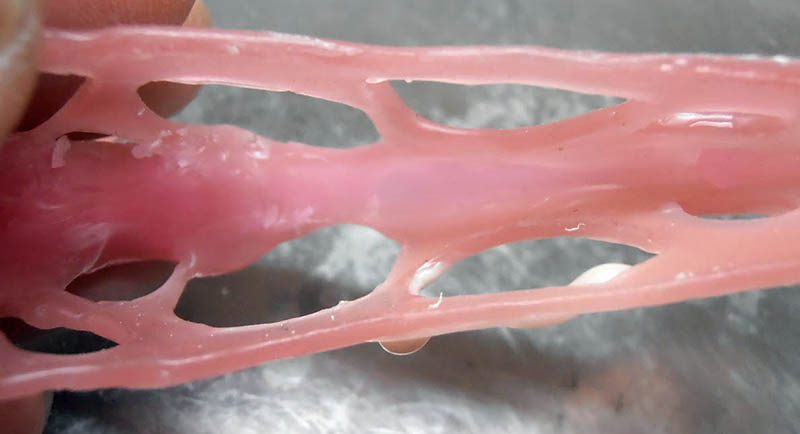
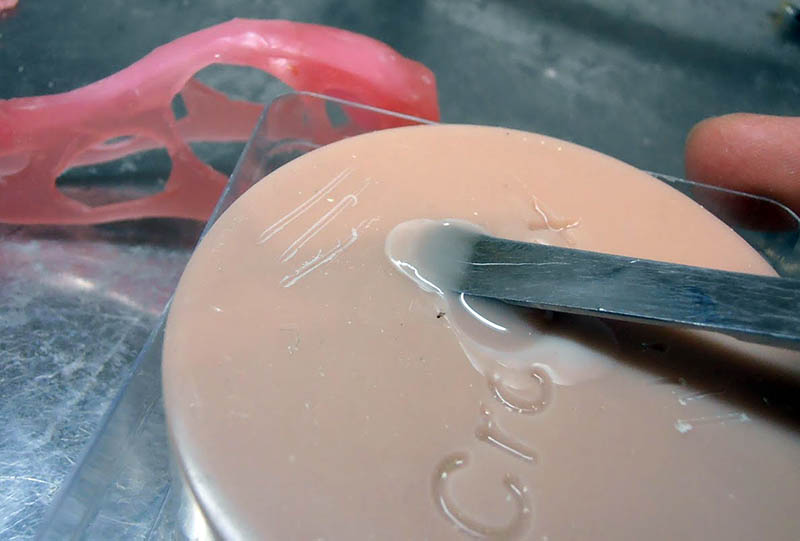 Une fois le plus gros de la forme du crâne réalisé, je rajoute une fine couche de cire de sculpture d'une autre couleur et moins translucide. Cela me permettra de faire les petits détails et la finition. Toujours le même procédé, chauffer le couteau, appliquer sur le bloc de cire, une fois la cire sur le couteau, réchauffer à nouveau pour une meilleur adhérence ou fusion et appliquer...
Une fois le plus gros de la forme du crâne réalisé, je rajoute une fine couche de cire de sculpture d'une autre couleur et moins translucide. Cela me permettra de faire les petits détails et la finition. Toujours le même procédé, chauffer le couteau, appliquer sur le bloc de cire, une fois la cire sur le couteau, réchauffer à nouveau pour une meilleur adhérence ou fusion et appliquer...
Once most of the shape of the skull is complete, I add a thin layer of sculpting wax of a different colour and less translucent. This will allow me to do the small details and the finishing. Always the same process, heat the knife, apply to the block of wax, once the wax is on the knife, heat again for better adhesion or fusion and apply...
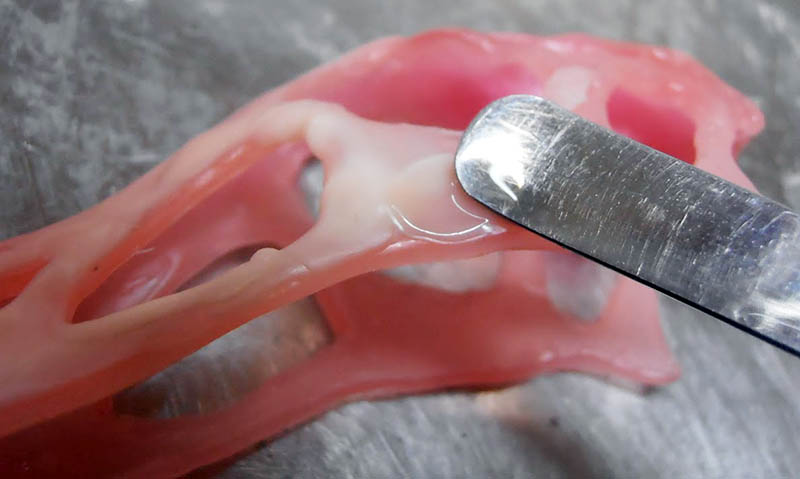
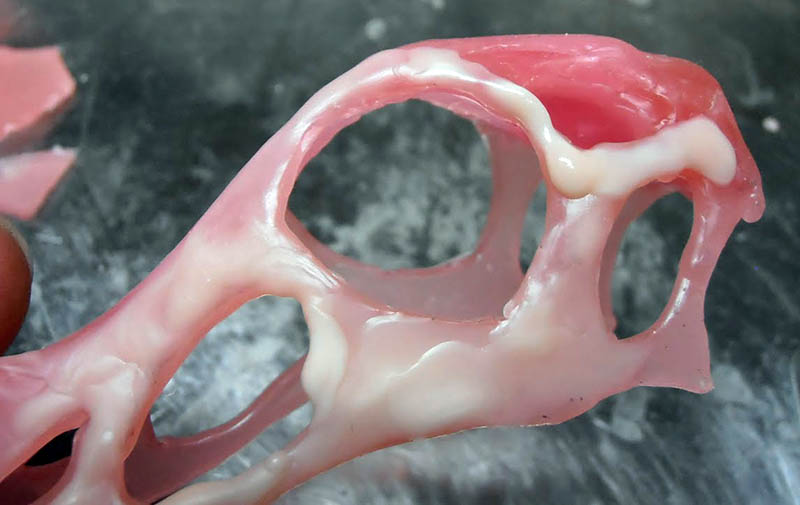
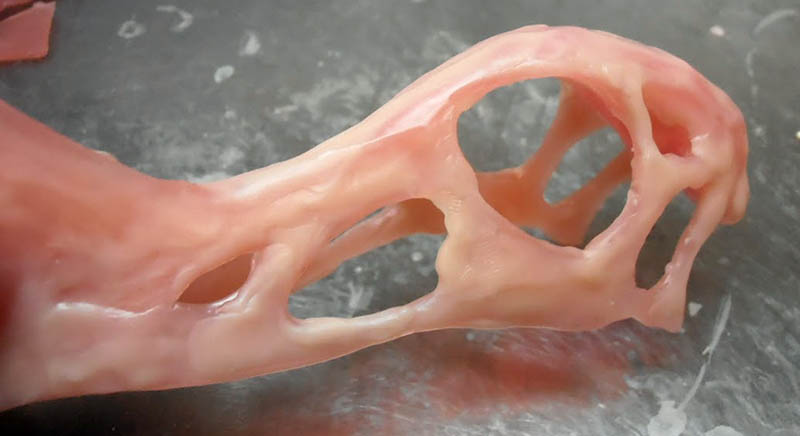
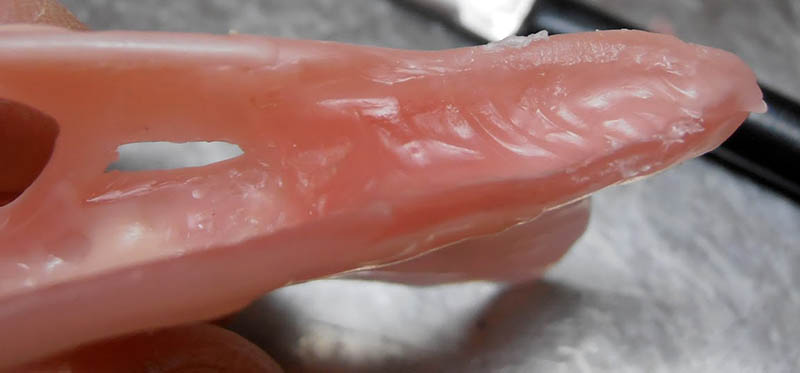
La même chose pour l’intérieur...
The same goes for the interior...
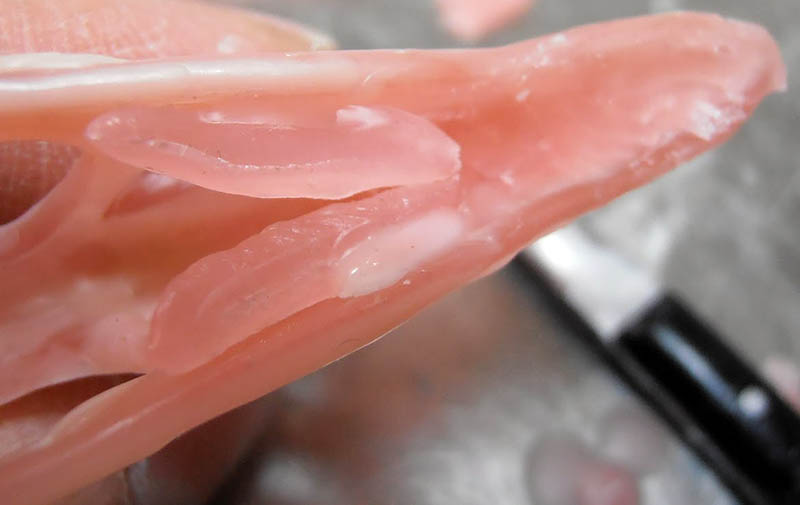
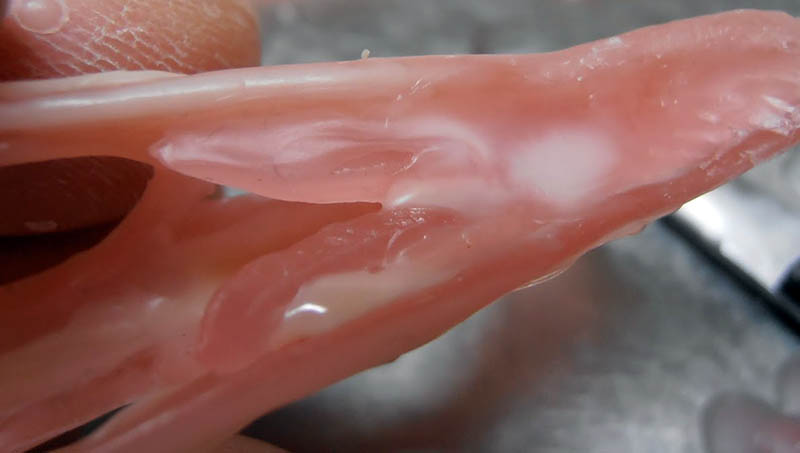
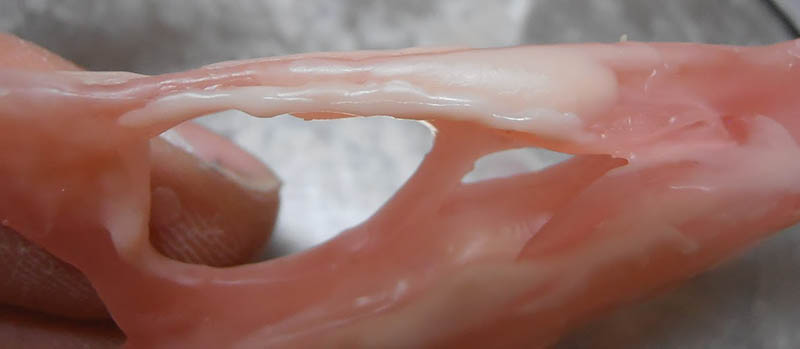
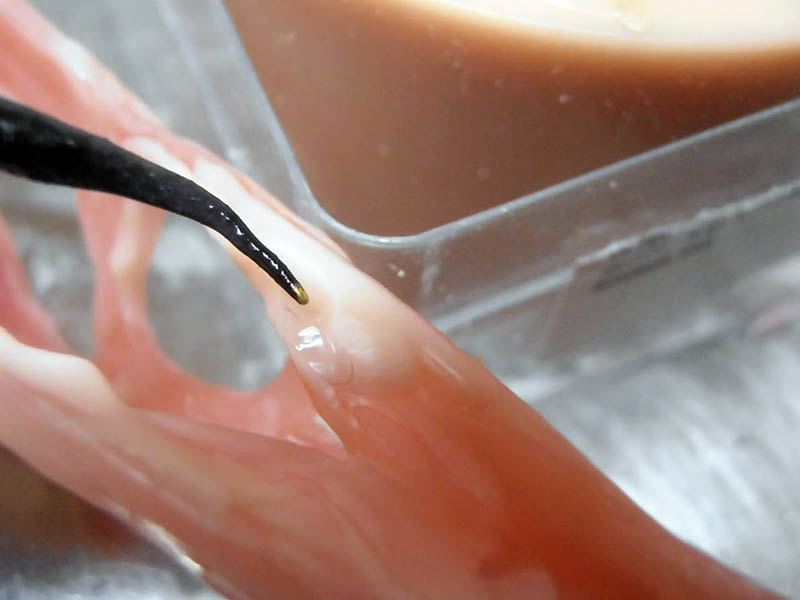
Arrivé à un certain moment, j'utilise la spatule chauffante pour l'ajout de petites quantités de cire, il est petit et précis. Grâce à cet instrument, je peux apporter de la cire assez rapidement, car l'embout est en permanence chauffé...
...Je trempe, j'ajoute la cire tout en soufflant, cela permet de donner la forme et de diriger la cire tout en la durcissant. La spatule peut aussi servir à lisser...
At a certain point, I use the heated spatula to add small quantities of wax; it's small and precise. Thanks to this tool, I can add wax quite quickly, as the tip is permanently heated...
...I dip and add the wax while blowing, which helps to shape and direct the wax while it hardens. The spatula can also be used to smooth...
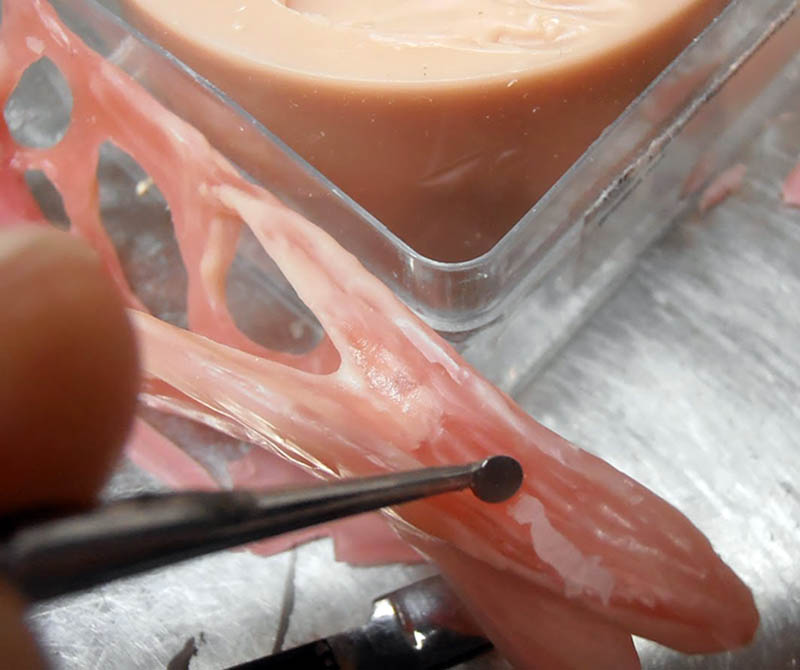 Une fois que suffisamment de cire à été ajoutée, je commence à utiliser les instruments de sculpture. Je peux aussi utiliser les instruments de chauffe pour en enlever et pour lisser au fur et à mesure. Il ne faut pas hésiter à revenir aux instruments de chauffe pour corriger son travail. C'est là, l'avantage majeur de la cire ! On enlève, on rajoute, encore et encore!...
Une fois que suffisamment de cire à été ajoutée, je commence à utiliser les instruments de sculpture. Je peux aussi utiliser les instruments de chauffe pour en enlever et pour lisser au fur et à mesure. Il ne faut pas hésiter à revenir aux instruments de chauffe pour corriger son travail. C'est là, l'avantage majeur de la cire ! On enlève, on rajoute, encore et encore!...
Once enough wax has been added, I start using the sculpting tools. I can also use the heating tools to remove the wax and smooth it out as I go along. Don't hesitate to go back to the heating tools to correct your work. That's the major advantage of wax! You take off, you add, you take off again and again!...
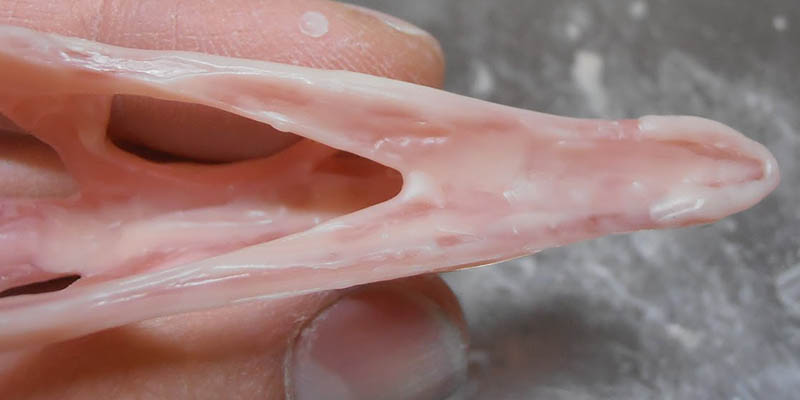
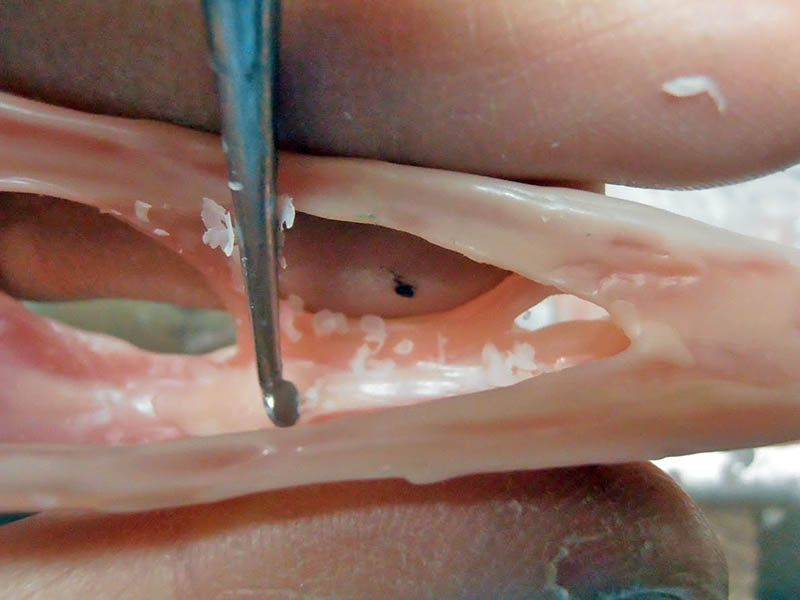
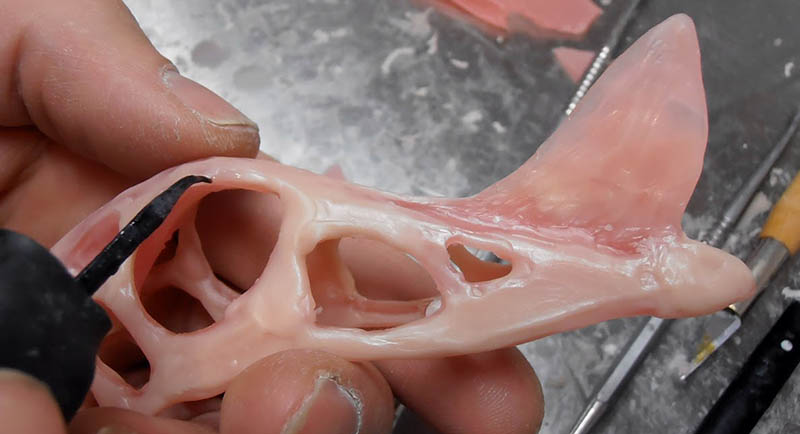
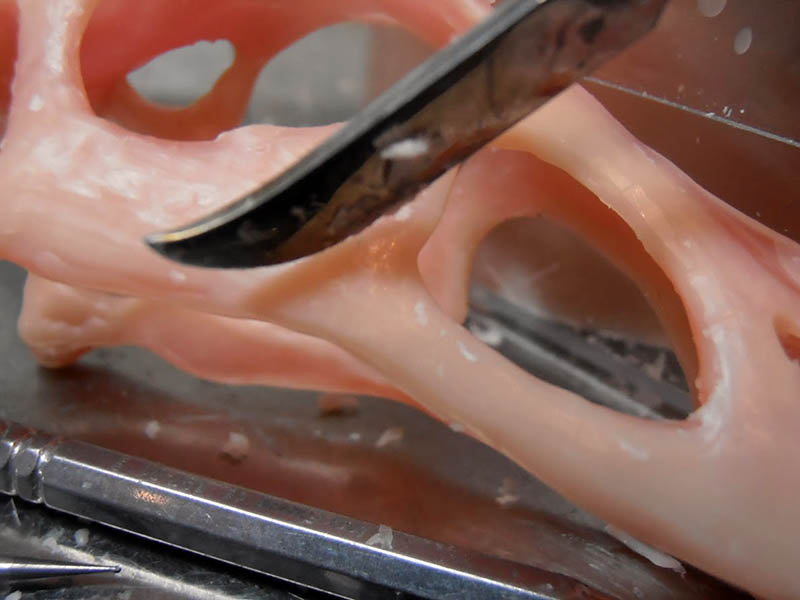
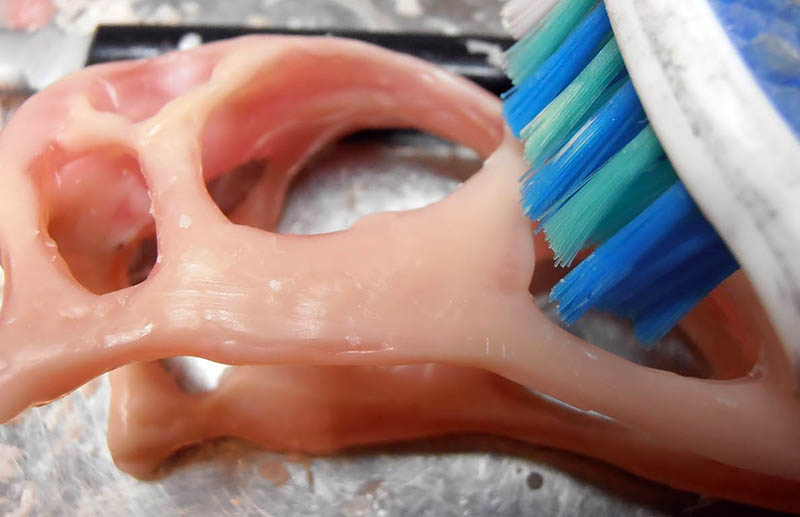
Un coup de brosse à dent pour nettoyer, cela donne aussi un effet agréable sur la cire et permet de pré-polir la cire...
Use a toothbrush to clean, which also has a pleasant effect on the wax and helps to pre-polish the wax...
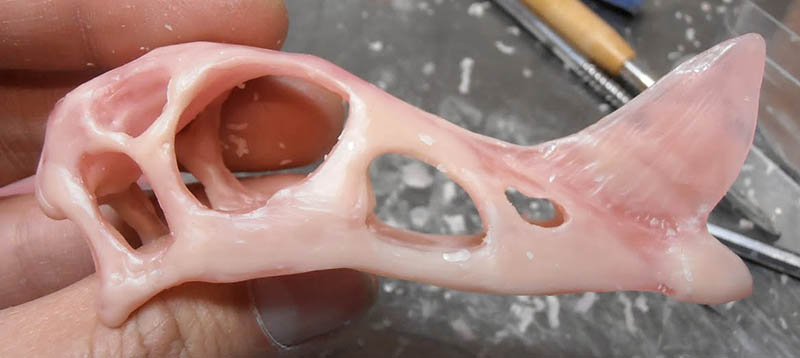
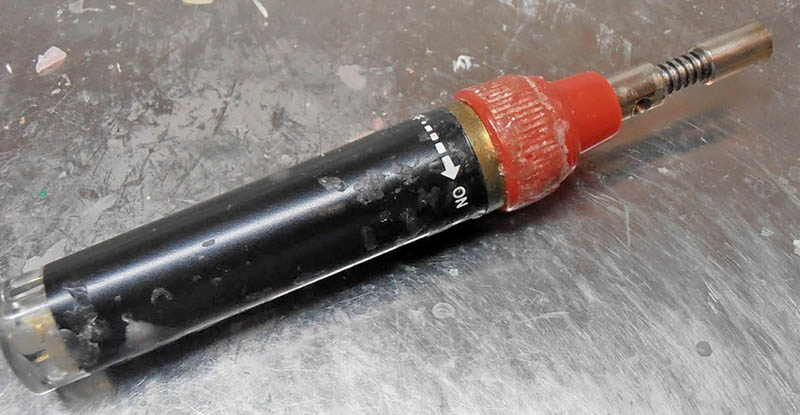 A l'aide d'un petit chalumeau rechargeable, je lisse le tout. Il faut passer le chalumeau en faisant des allers-retours très rapidement mais suffisamment longtemps pour qu'il fasse fondre la face extérieur du modelage. C'est un coup de main à prendre, il est préférable de s’entraîner au préalable...
A l'aide d'un petit chalumeau rechargeable, je lisse le tout. Il faut passer le chalumeau en faisant des allers-retours très rapidement mais suffisamment longtemps pour qu'il fasse fondre la face extérieur du modelage. C'est un coup de main à prendre, il est préférable de s’entraîner au préalable...
Using a small rechargeable torch, I smooth the whole thing. You have to pass the torch back and forth very quickly, but long enough for it to melt the outside of the modelling. It's a bit of a trick, but it's best to practise beforehand...
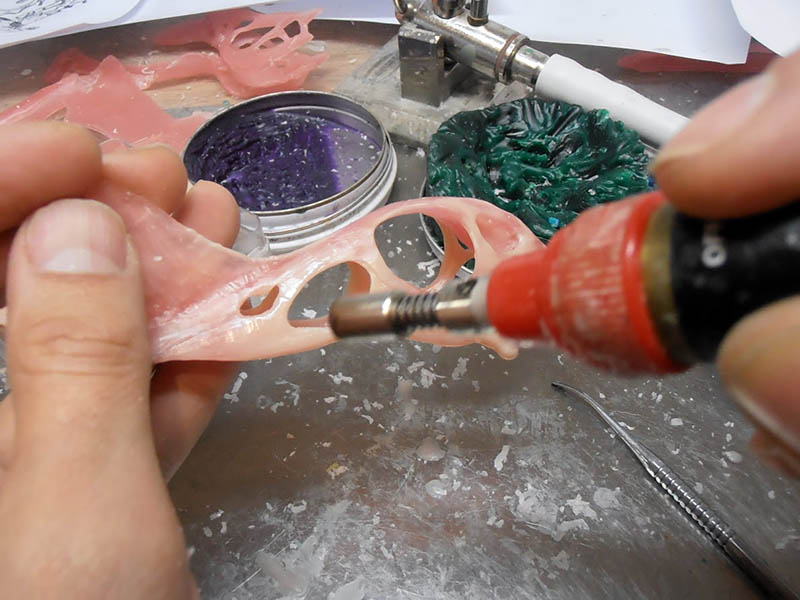
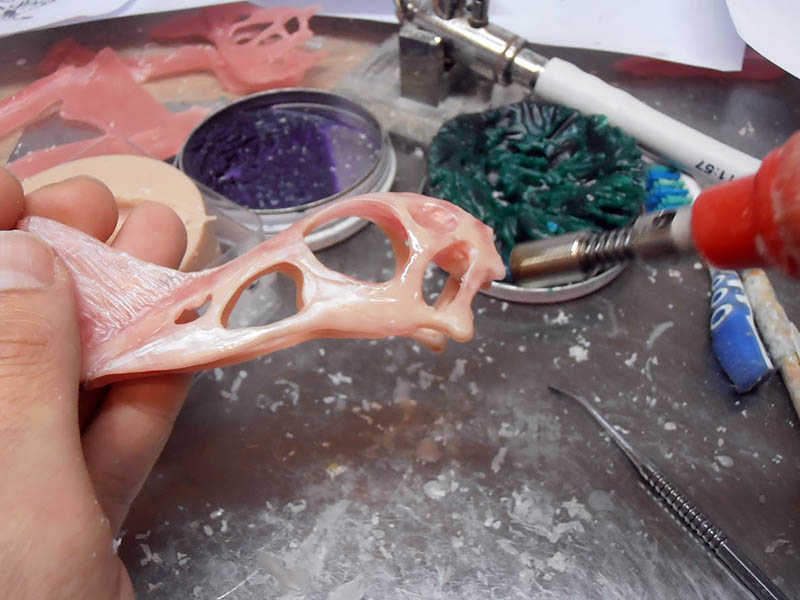
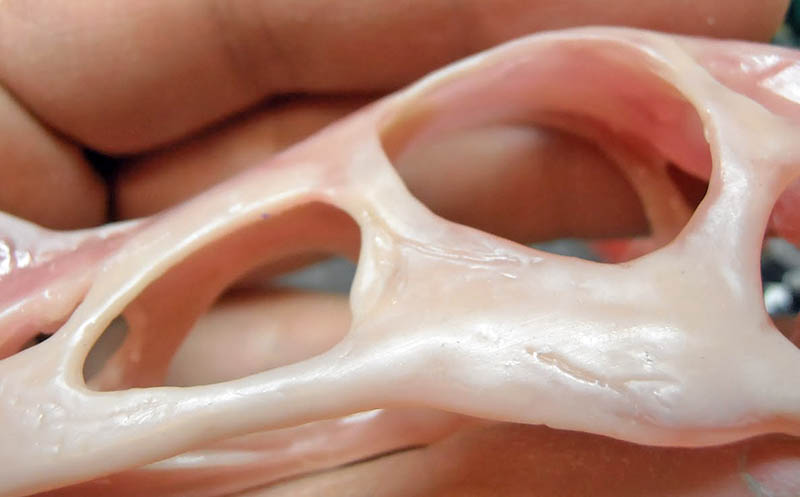
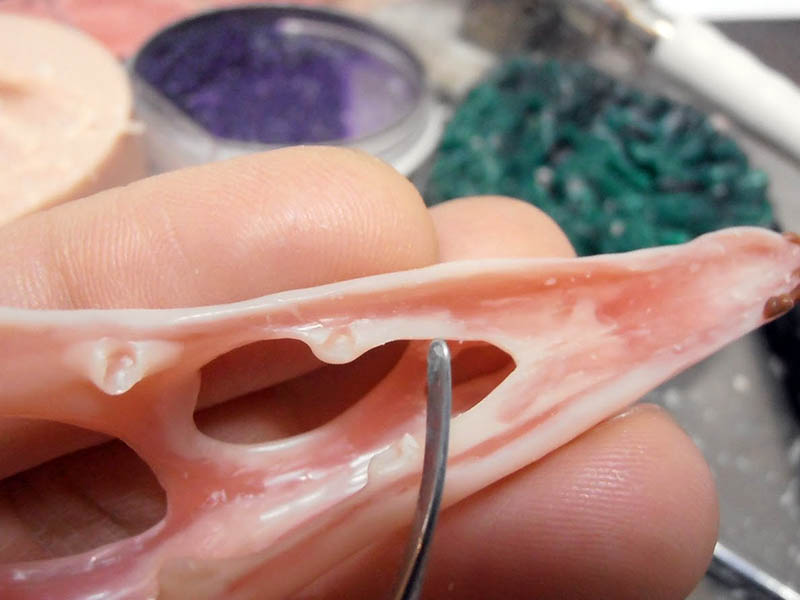 Préparation de l’intérieur pour les futurs os palatins. Une autre pièce en cire sera faite une fois le crâne fini en résine, pour une meilleure adaptation... Ici je pose simplement un instrument métallique froid sur une goutte de cire chauffée qui refroidit...
Préparation de l’intérieur pour les futurs os palatins. Une autre pièce en cire sera faite une fois le crâne fini en résine, pour une meilleure adaptation... Ici je pose simplement un instrument métallique froid sur une goutte de cire chauffée qui refroidit...
Preparing the inside for the future palatine bones. Another wax part will be made once the skull is finished in resin, for a better fit... Here I'm simply placing a cold metal instrument on a drop of heated wax that's cooling...
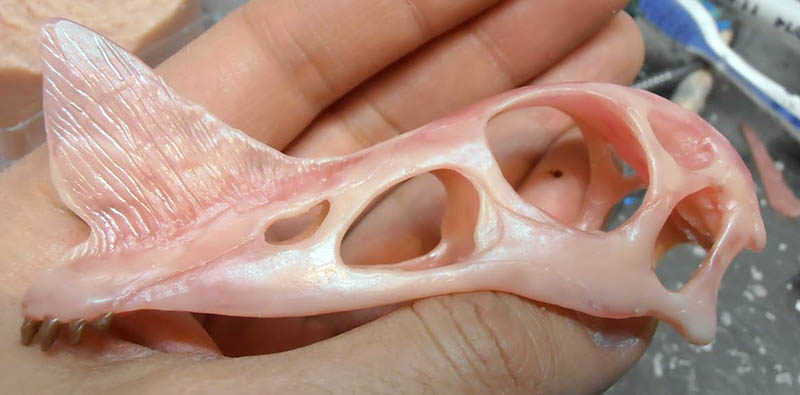
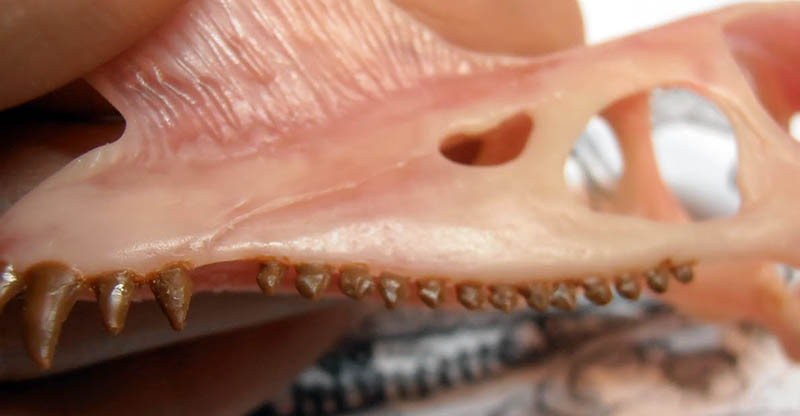 Je continue à faire les détails... Je corrige, je lisse, etc. Enfin je commence à faire les dents...
Je continue à faire les détails... Je corrige, je lisse, etc. Enfin je commence à faire les dents...
I continue to work on the details... Correcting, smoothing, etc. Finally, I start on the teeth...
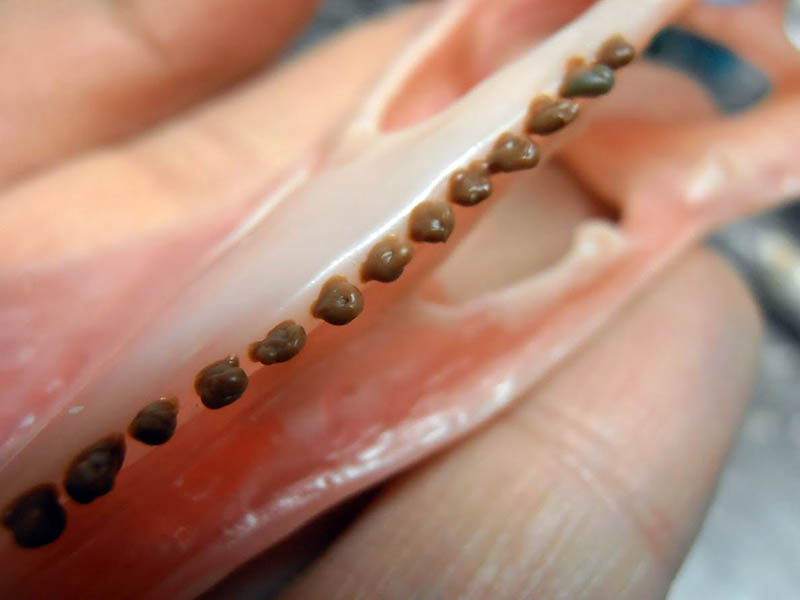 Pour cela j’utilise encore une cire de sculpture mais très dure et encore d'une couleur différente. Cette fois-ci j'utilise la PKT (même forme que la spatule chauffante mais à chauffer manuellement avec le bec Bunsen ou la lampe à alcool)...
Pour cela j’utilise encore une cire de sculpture mais très dure et encore d'une couleur différente. Cette fois-ci j'utilise la PKT (même forme que la spatule chauffante mais à chauffer manuellement avec le bec Bunsen ou la lampe à alcool)...
To do this I still use a sculpting wax, but it's very hard and still a different colour. This time I'm using the PKT (same shape as the heated spatula, but heated manually with a Bunsen burner or alcohol lamp)...
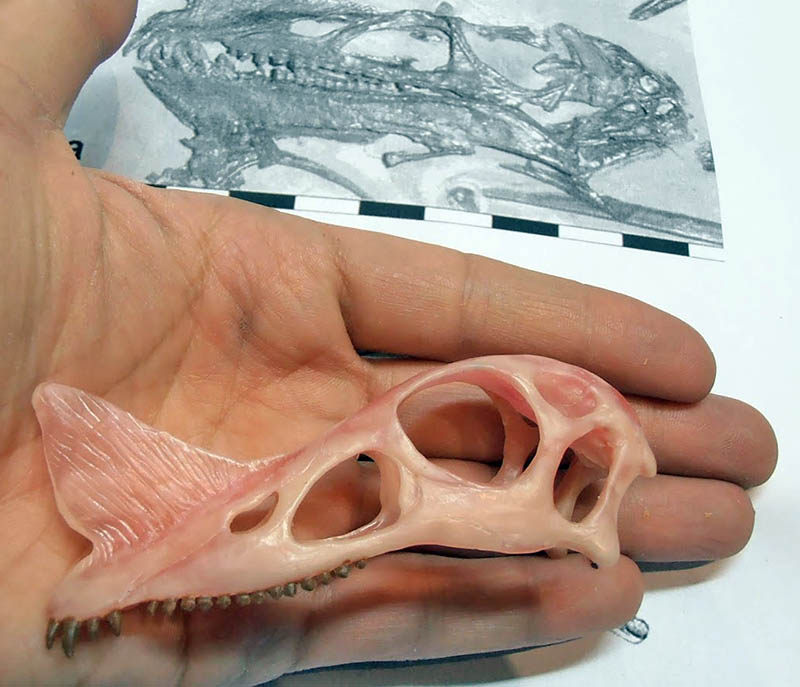
Cet instrument est beaucoup plus précis car il ne chauffe pas en permanence, donc la cire refroidit et durcit plus vite, je ne sais pas si je suis bien clair....
Cela permet de déposer et modeler la cire plus facilement mais aussi précisément et plus rapidement...
This instrument is much more precise because it doesn't heat up all the time, so the wax cools and hardens more quickly, I don't know if I'm making myself clear....
This means you can apply and shape the wax more easily, precisely and quickly...
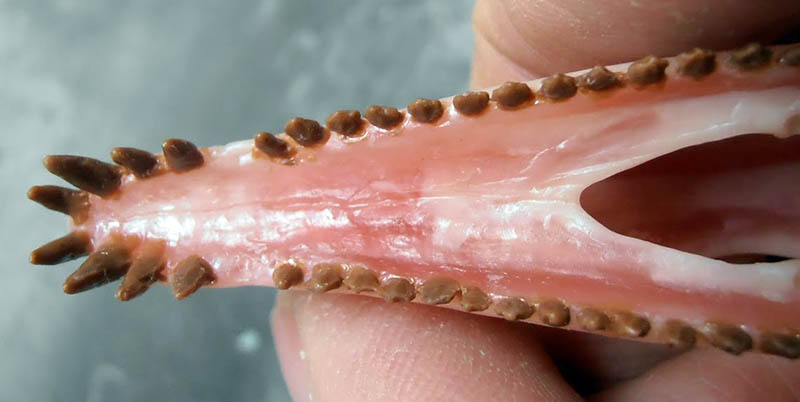
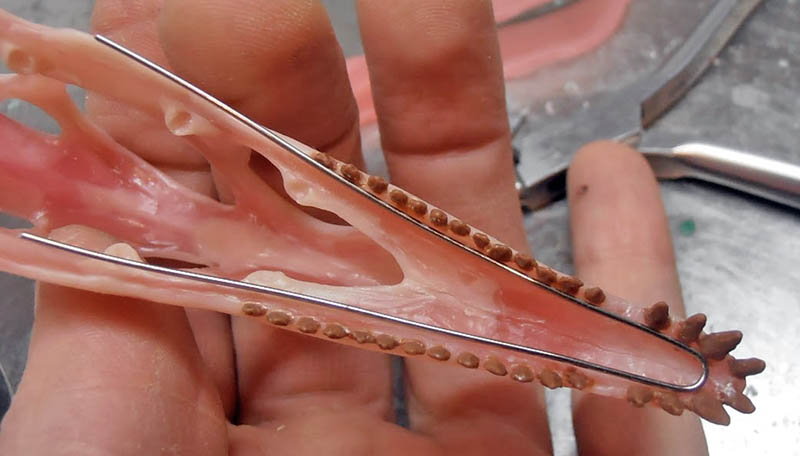 Maintenant je peux commencer la mâchoire que je ne finirai pas avant d'avoir fini le crâne en résine, pour une meilleure adaptation encore une
Maintenant je peux commencer la mâchoire que je ne finirai pas avant d'avoir fini le crâne en résine, pour une meilleure adaptation encore une
fois. Je prépare un bout de fil de fer que je forme pour rigidifier la cire...
Now I can start on the jaw, which I won't finish until I've finished the resin skull, for a better fit once again.
again. I'm preparing a piece of wire that I'm forming to stiffen the wax...
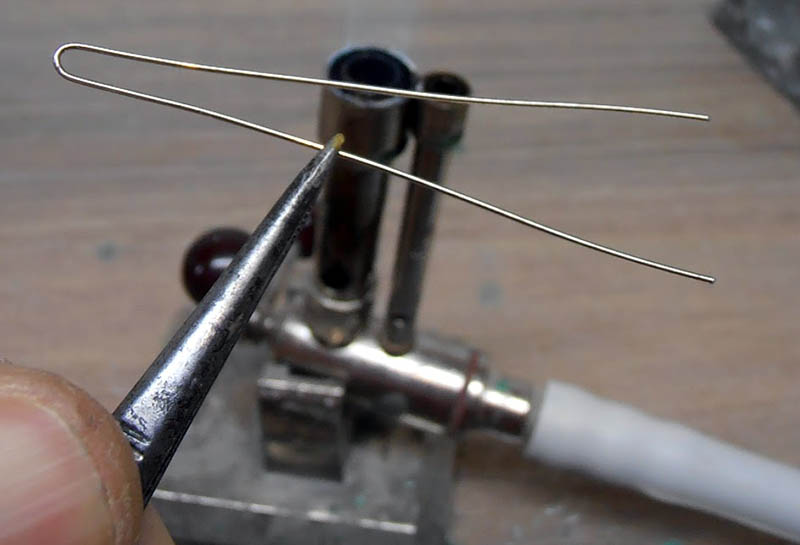 Puis je l'insère à l’intérieur en l'ayant chauffé au préalable. Pas trop quand même sinon il traverse la cire... S'il n’est pas assez chaud, on peut chauffer le couteau à cire et l'appliquer sur le fil de fer. La chaleur se diffusera et le fil de fer s'enfoncera facilement dans la cire...
Puis je l'insère à l’intérieur en l'ayant chauffé au préalable. Pas trop quand même sinon il traverse la cire... S'il n’est pas assez chaud, on peut chauffer le couteau à cire et l'appliquer sur le fil de fer. La chaleur se diffusera et le fil de fer s'enfoncera facilement dans la cire...
Then I heat it up and insert it inside. But don't heat it too much or it will cut through the wax... If it's not hot enough, you can heat the wax knife and apply it to the wire. The heat will spread and the wire will sink easily into the wax...
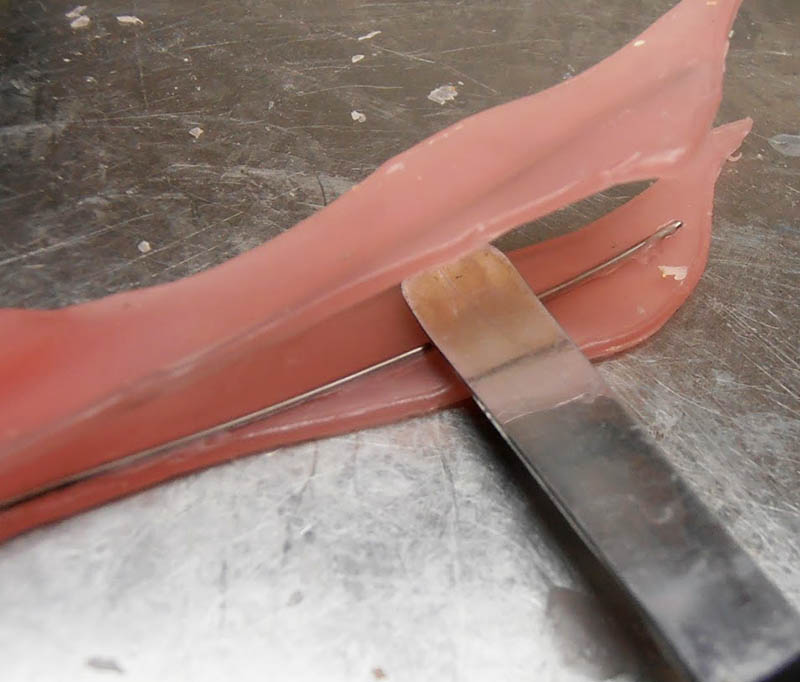 Même façon de faire que pour le crâne, apport de cire de sculpture, donner la forme générale et début de finition...
Même façon de faire que pour le crâne, apport de cire de sculpture, donner la forme générale et début de finition...
Same procedure as for the skull, add sculpting wax, give the general shape and start finishing...
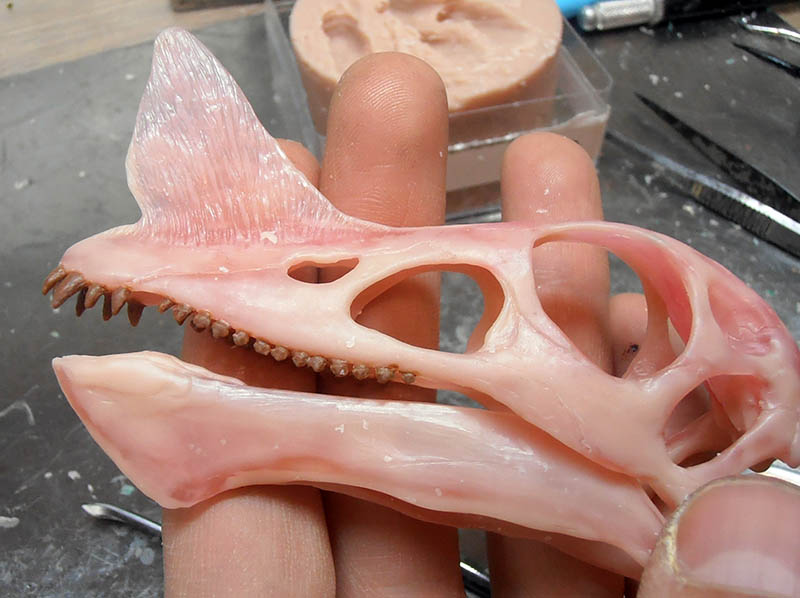 Le crâne fini et prêt à être moulé...
Le crâne fini et prêt à être moulé...
The finished skull, ready to be moulded...
















